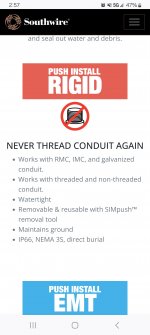electrofelon
Senior Member
- Location
- Cherry Valley NY, Seattle, WA
- Occupation
- Electrician
Oh ok, in article 300. That section in 344 I posted seems to conflict with that.The code requires field cut threads to be protected by an approved corrosion resistant compound when installed in an outside location.


